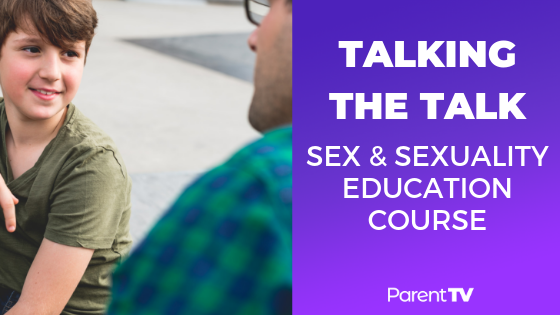Understanding and Addressing Children's Sexual Behavior
Categories: Sexuality Education
A national study from the University of South Australia has uncovered an increase in reports of children under the age of ten exhibiting problematic sexual behaviour towards each other, and teachers, educators, parents and carers are struggling with how best to respond to this phenomenon.
Problematic Sexual Behaviour (PSB) is the term used to describe abnormal and harmful sexual behaviour displayed by young children that falls outside the usual parameters of curiosity and natural exploration. In other words, it’s behaviour that goes beyond usual kid behaviour, and can involve coercion, threats, secrecy, violence and/or aggression and adult themes.
Why is this happening?
According to the study, the increase in Problematic Sexual Behaviours is due to a number of factors, including trauma, exposure to domestic violence and/or drug or alcohol abuse in the home, as well as past sexual abuse and exposure to pornography.
So, what can we do about it?
Vanessa Hamilton, ParentTV’s resident Sexuality Health Nurse and Educator, says that it’s important that positive conversations with kids about human sexuality begin early, even at toddler age, in order to help kids understand what behaviour is appropriate. ‘Global research clearly states that giving children comprehensive, accurate, age-appropriate sexuality education from a young age is beneficial to them. Body safety, respectful relationships and consent are all important concepts for children to grasp, and understanding these starts in the playground. Normalising and naming body parts should start as young as toddler age.’
For example, Vanessa recommends that parents name all body parts when bathing kids or changing their nappies, using the same tone and matter-of-fact approach. Ears, noses, elbows, vulvas, vaginas, penises and scrotums are all talked about in the same way, with genital names not given any extra significance. ‘This normalises their amazing bodies, decreases shame and gives them the vocabulary to tell an adult if they have a problem with that part of their body, or if someone is harming them there,’ Vanessa says.
WATCH VIDEO: Naming Private Parts
WATCH VIDEO: Teaching Body Safety Using the Concept of Public and Private
What can teachers and educators do about it?
The UniSA study also highlighted the difficulty that teachers and educators have in identifying problematic sexual behaviour, deciding how to address it and determining whether or not to report it. More training for these staff is necessary, the study suggests, to give them the resources and knowledge they need to respond effectively to PSB. ‘It’s widely acknowledged that one of the most significant barriers to the delivery of Sexuality and Respectful Relationship Education is a teacher’s lack of adequate training, confidence and skills, along with being unfamiliar with the topic or content,’ Vanessa says. But, it shouldn’t be the sole responsibility of these adults to provide the sexuality education that children need, either. ‘The responsibility for having these conversations lies mainly with parents. Children are getting a sexuality education in everyday life, from school, other kids, advertising, TV, radio, magazines and pornography, but the information they receive usually isn’t accurate. It’s important for parents to give children an accurate version of human sexuality that is positive and healthy.’
WATCH VIDEO: What does sexuality education for children look like?
How do you talk to kids about human sexuality and sex?
Human sexuality can be a tricky topic to raise, but it’s too important to avoid, says Vanessa. ‘There are a lot of fears around this topic, and many parents might not know how to begin these conversations, but the most important thing is just to start. Better still, do a bit of research to arm yourselves with some tips and facts. When there aren’t adequate conversations at home, kids fill in the blanks from other sources, and pornography is a primary one. The average age of kids seeing pornography is around 10 or 11. The consequences of this can be devastating.’
Earlier this year, Vanessa was delivering a body safety lesson to a class at a primary school. After the lesson, an 11-year-old boy approached Vanessa and told her that he thought he was addicted to Pornhub, the free online hardcore pornography site. Upon investigating further, Vanessa discovered that he and other children in his grade were accessing the site regularly. Without the lesson on body safety, the boy may not have had an opportunity to disclose his experience and seek help, Vanessa says. ‘Giving children permission and encouragement to speak up about unsafe situations is paramount to their safety.’
How does sexuality education for children help?
The benefits of early sexuality education for children are immeasurable. It lays the foundations for understanding and practising consent in later relationships, and helps facilitate a positive attitude to the possibility of fulfilling, safe and pleasurable intimate partnerships and experiences. ‘We know that children who have adequate, comprehensive and accurate sexuality education from a young age have much better outcomes later on in life,’ Vanessa confirms. ‘They’re empowered and they can make good decisions. Countries who do this well have fewer teen pregnancies, less sexually transmitted infections, and, importantly, those young people delay their first experience of sexual intercourse because they’ve learned that it’s an experience for adult minds and bodies only, not for children.’
Where to from here?
Want to know more about how to have conversations about sex and sexuality with your children? You’re in luck! Vanessa Hamilton has compiled a fantastic three-part course for ParentTV members, packed with tips on how to answer curly questions, what words to use, what topics to cover, and when to do it.

